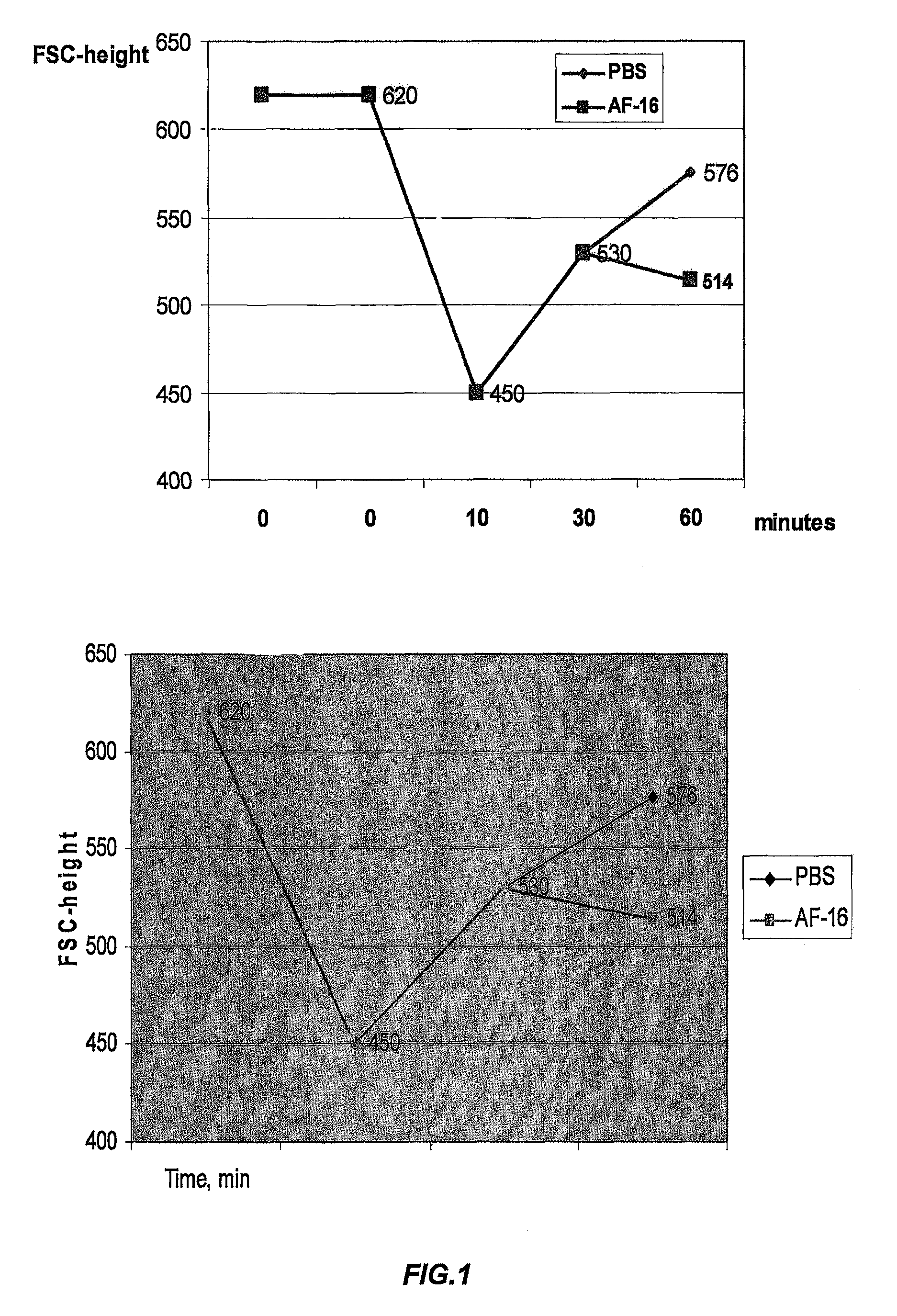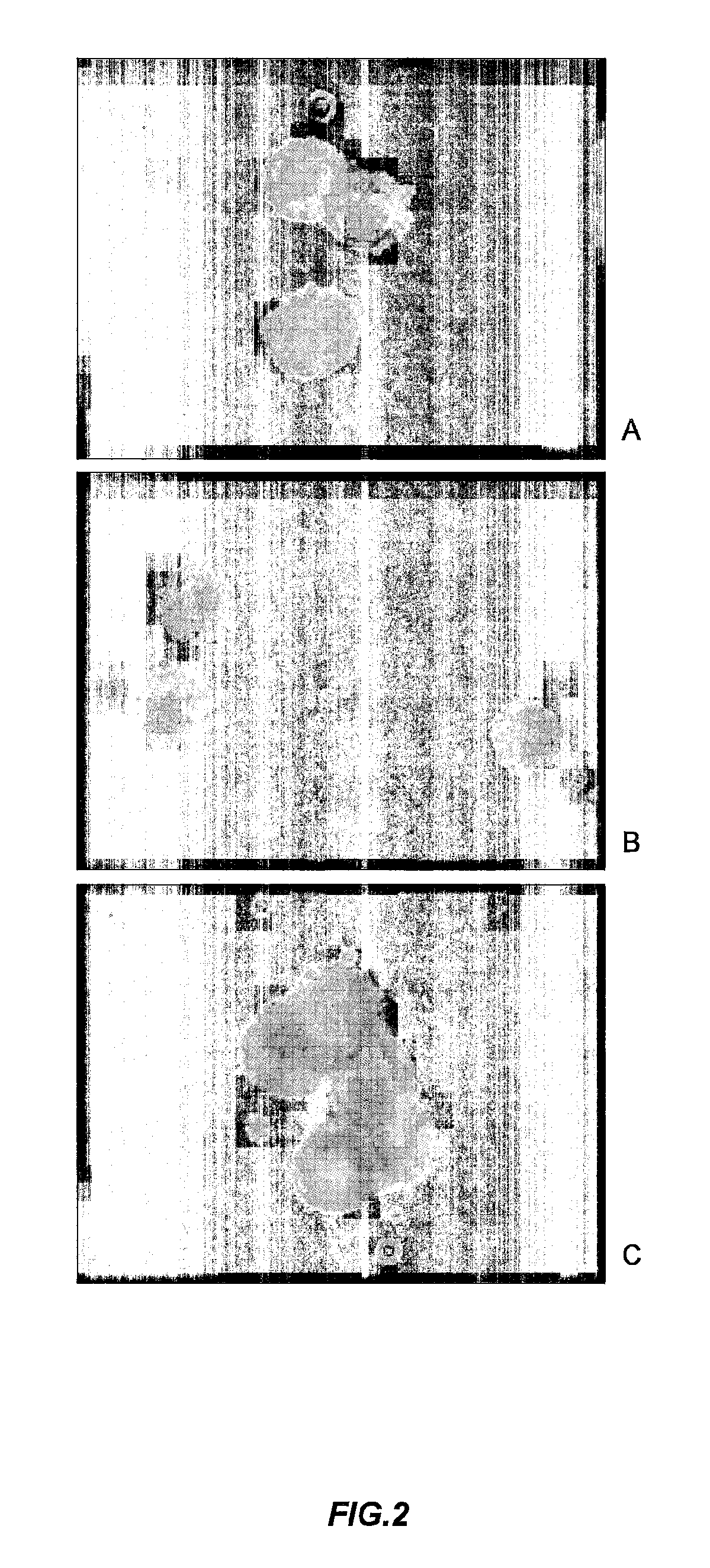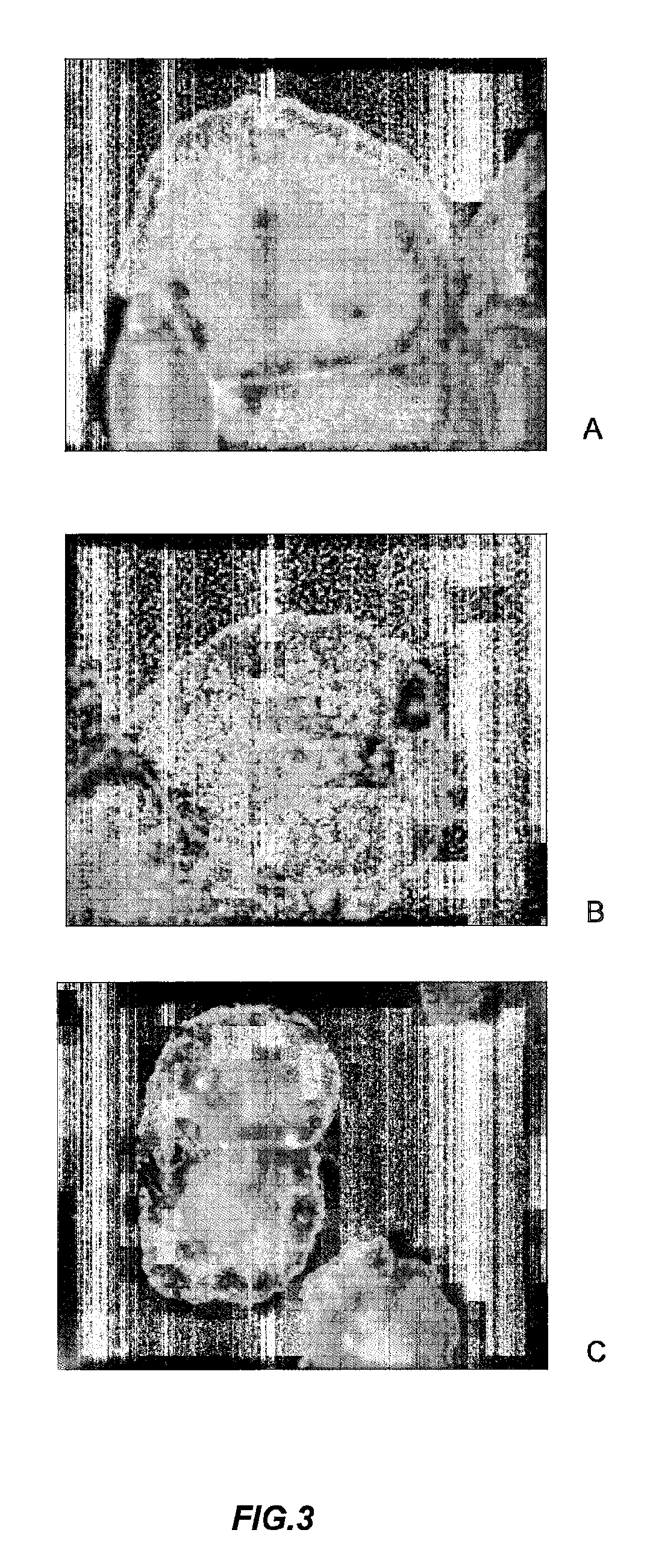Use of antisecretory factors (AF) for optimizing cellular uptake
a technology of anti-secretory factors and cellular uptake, which is applied in the field of anti-secretory factors, can solve the problems of insufficient in vivo cellular uptake of novel therapeutic agents such as monoclonal antibodies, cytokines and effector cells, and the heterogeneity of tumor cellular heterogeneity, etc., and achieves the effects of improving cellular uptake of a pharmaceutical substance, reducing tumor heterogeneity, and effective normalizing
- Summary
- Abstract
- Description
- Claims
- Application Information
AI Technical Summary
Benefits of technology
Problems solved by technology
Method used
Image
Examples
example 1
Disintegration of the Actin Filaments in Intestinal Epithelial Cells
[0152]The aim of the present experiment was to elucidate if disintegration of the actin filaments in intestinal epithelial cells (enterocytes) influenced the fluid secretion in the small intestine in adult rats.
Materials and Methods
[0153]Cholera toxin (Sigma), 3 μg, was infused in a 15 cm long ligated loop formed from the jejunum. Such a treatment resulted in 5 h in accumulation of fluid, which was measured to amount to 340 mg / cm intestinal length. The actin network, normally distinctly and strictly organized in the epithelial cells, was thoroughly disorganized. The microvilli on the luminal surface of the intestinal epithelial cells were short, clumpy and irregular in their outline while their core of microvilli almost completely lacked.
Results
[0154]If the intestinal loop was challenged with cholera toxin and then had AF-16, 100 μg, infused systemically within 10 minutes, the expected hypersecretion was abolished. ...
example 2
Effect of AF-16 on Tumor Cell Distribution of Doxorubicin
[0158]The effect of AF-16 on the vascular and cellular supply of a cytotoxic, low molecular weight drug in the tumor was investigated by using doxorubicin, which emits a distinct, red fluorescence and binds to DNA. The frequency of red labeled cell nuclei was used as a measure of the access of doxorubicin to and into individual tumor cells. Animals with Mat B III tumors were pretreated by either an intranasal dose of 100 μg AF-16 (n=3) or the vehicle, PBS (n=3) 60 min prior to a single i.v. injection of doxorubicin (9 mg / kg b.w). The animals were sacrificed after 15 min, the tumors were dissected out and snap frozen in liquid nitrogen. Cryostat microtome sections were prepared, attached to glass slides and fixed in 4% buffered formaldehyde. After staining nuclei with Hoechst 33342 (Sigma), the sections were mounted with Vectashield™ (Vector Laboratories Inc, USA) and examined in a Zeiss Axio10 fluorescence microscope.
Materials...
example 3
[0166]The aim of these experiments was to elucidate alterations of the cell surface area, i.e. of the cell volumes, as related to the tonicity of the fluid medium in which the MATB cells were suspended. Tumor cells, as do normal cells, give high priority to maintain their cell volumes exactly regulated. The utilized strain of MATB cells is known to largely rely on the use of the fluid and ion transfer pump NKCC-1 for monitoring their dimensions and internal milieu.
Materials and Methods
[0167]The tumor cell line MATB cells (ATCC Nr: CRL-1666, designation 13762 MATB 111), a well known and commonly used cell line, was cultured in suspension and used in cell flow experiments using a FACS equipment. Thereby, the close to spherical tumor cells could rapidly alter their surface area and cell volume as a response to challenges through the extracellular fluid.
[0168]The FACS apparatus measured the MATB cells surface to be 620 units in isotonic medium, lacking any serum or other external protei...
PUM
| Property | Measurement | Unit |
|---|---|---|
| body weight | aaaaa | aaaaa |
| size | aaaaa | aaaaa |
| shrinkage | aaaaa | aaaaa |
Abstract
Description
Claims
Application Information
 Login to View More
Login to View More - R&D
- Intellectual Property
- Life Sciences
- Materials
- Tech Scout
- Unparalleled Data Quality
- Higher Quality Content
- 60% Fewer Hallucinations
Browse by: Latest US Patents, China's latest patents, Technical Efficacy Thesaurus, Application Domain, Technology Topic, Popular Technical Reports.
© 2025 PatSnap. All rights reserved.Legal|Privacy policy|Modern Slavery Act Transparency Statement|Sitemap|About US| Contact US: help@patsnap.com



